The forgotten saga of a secret defence computer
Until the opening of the Programmed Disappearance exhibition at Musée Bolo in 2011, only a handful of specialists knew of the existence of the Cora, the first Swiss transistor computer. It was by chance that I found a copy of this machine one of those machines in a cellar at EPFL. The investigation that followed enabled me to discover an extraordinary adventure and above all to meet a great man, Peter Toth, who had imagined his digital computer as early as the late 1950s.
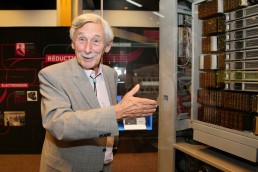
In July 2010, while Musée Bolo’s team was preparing a new exhibition, I discovered in a well hidden cellar of the EPFL a metal cupboard that nobody knew anything about. Intrigued by this object that looks like a giant refrigerator, I decided to investigate. Little did I know that I had made one of the biggest finds in the history of my collection of old computers.
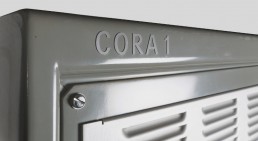
So, looking for clues, the name on the top of the machine, “CORA 1”, didn’t help me much. On the other hand, the plate “Contraves AG, Zürich”, found inside, was really starting to interest me. Electronic equipment, visibly old, made in Switzerland? Following this lead, I wrote to Rheinmetall Defence AG, the company that bought Contraves, and Engler Uorspeter replied. Thanks to his efforts, I finally got in touch with the creator of the Cora, the first Swiss transistorized computer and the first to be commercialized.
In our first e-mail exchanges and then during our encounter at EPFL, Peter Toth said he was moved to finally be able to tell his story to someone. For years, his work had remained secret. More recently, he had the impression that no one was interested in this old, obsolete equipment. At Musée Bolo, he obviously found a particularly attentive ear!
Peter Toth found again his Cora in the EPFL building on 10 February 2011. He was accompanied by Marielle Stamm, an active member of Musée Bolo team, Xavier Nicol, director and cameraman for the occasion, and myself.
On the same day, Marielle Stamm and I spent a long time collecting the exciting story of the Cora’s development. Marielle Stamm wrote the text below and part of the interview was filmed (video at the end of this article).
The Cora 1 was naturally integrated into Programmed Disappearance, the exhibition at the Musée Bolo which opened in November 2011. Peter Toth was present at the opening, he said a few words to the guests and answered journalists’ questions, fifty years after the development of his computer. A small token of appreciation for a true pioneer of Swiss Computing. Peter Toth died in 2015 at the age of 83. I feel I was particularly lucky to have met him.
Yves Bolognini
Marielle Stamm, February 2011
When, in 1964, at the great Expo in Lausanne, an astonished public saw an invisible hand tracing the curves of the roofs and bell towers of the Castle of Thun on a large graphic table, they had no idea that a computer hidden behind a wall was performing this feat.
The unlikely machine was one of the first Cora 1, a 100 percent Swiss computer developed in Zurich by a Hungarian genius hired by the Contraves company, Peter Toth. Named Contraves after the two Latin words contra aves (against birds), the company had been specialising in the manufacture of firing systems for air defence since its foundation in 1936. Initially, the company used analogue computers to control these systems. But they soon proved to be neither fast enough nor reliable enough. The technical director at the time, Dr. Max Lattmann, who was in charge of the development of these early analogue systems, let Peter Toth follow his intuition: digital technology, which was in its infancy at the time, could give better results.
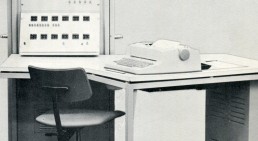
Passionate about electronics from an early age, Peter Toth had to flee communist Hungary at the age of 16. Chance led him to Israel, where he studied engineering at the Haifa Institute of Technology. In 1956 he moved to Zurich. His meeting with Dr. Lattmann was decisive.
Peter Toth – Dr. Lattmann trusted me. He said, “I don’t know anything about digital technologies, but if you can do something, I’ll give you the green light. I started working in 1957. I had to develop specific circuits for military field use, capable of withstanding extreme temperature variations, between -40 and +75°C. I had to develop circuits that would be suitable for military field use.
Marielle Stamm – Why didn’t you use computer manufacturers, especially American ones?
PT – Computers, even today, do not tolerate large variations in temperature. Our components had to accept the field constraints imposed by the military. On the other hand, working on military applications, we did not want to be tied to foreign manufacturers. Finally, still subject to the rules of the Swiss army, we had to be able to maintain these systems and their components for a very long service life, between 20 and 30 years. This was not possible with foreign suppliers.
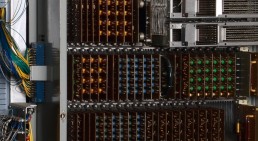
So we built our own printed circuit boards based on germanium transistors, the Codisym, and standardized them. A Codisym module consisted, for example, of eight inverters or six flip-flops. The Cora 1 had 8,000 diodes and a ferrite core memory of 2,048 24-bit words (6 KB). I adopted the architecture of Von Neumann who, by the way, was Hungarian like me.
MS – Were you also in charge of programming the Cora?
PT – Machine language is boring. I preferred to develop a cross-assembler on another computer already installed at Contraves, the IBM 1620, which provided us, on perforated tape, the code that allowed us to perform ballistic calculations: trajectory calculation, elimination of radar noise, taking into account the movement of aircraft according to their speed, weather conditions, wind, etc.
MS – So were there a number of interfaces connected to the Cora?
PT – Data was provided either on punch cards or punched tape. So we had card and ribbon readers and punches. We also developed the Coragraph, a large drawing table, like the one we exhibited at the Lausanne Expo in 1964, but we took care to hide the computer behind a wall so as not to scare visitors!
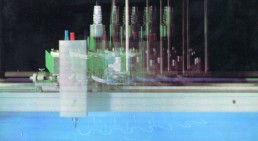
MS – Did this lead you to other applications?
PT – Indeed. Especially in cartography. That’s how we sold a Cora 1 almost simultaneously to the EPUL (now EPFL, editor’s note), in Professor Bachmann’s photogrammetry department, and a second machine in Vienna to the city’s land registry. These two Coras were the first to be sold by Contraves.
MS – Did Cora have other opportunities?
PT – We were contacted by a boat manufacturer, the German company Hovalt. To manufacture the hull frames, they used hand-controlled machines that milled the steel plates. But these were not precise enough to cut the curves. I programmed the Cora 1 to perform calculations by polynomial interpolation and we provided the equivalent of a Coragraph, of immense size, capable of making these frames with great precision.
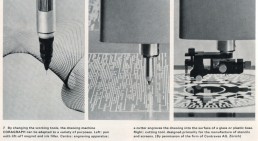
MS – How many Cora 1 did Contraves produce?
PT – Approximately 60 units. The Cora 1 was only used as a prototype to develop the basic technology and ballistic calculations of air defence systems. In 1966, the Cora 2, built on technology based on DTL (Diode-transistor logic) integrated circuits, equipped Skyguard, the new firing system of Contraves. Faster and much more compact than the first model, the Cora 2 allowed calculations to be made in the field. The Cora 2 was also used to engrave multilayer circuits. Later, the Coragraph was commercialized in the industry for other applications.
MS – Let’s go back a bit. Why didn’t you ask ETHZ to cooperate in your projects? Weren’t they developing their own computer, the ERMETH?
PT – The ERMETH was dedicated to the mathematical and scientific applications of the school. They were not at all oriented towards industrial applications. ETHZ was not yet training computer engineers, let alone programmers. The professors created their own programs.
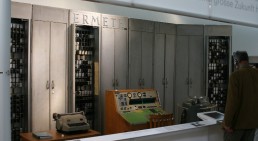
We hired young engineers, some of whom had not even completed their studies but had a sufficient basic knowledge of mathematics and physics. They took assembly courses at IBM in Zurich. Our programmers were among the first in Switzerland to practice this profession.
MS – Why didn’t Contraves specialize in manufacturing computers for industry, such as Digital Equipment at the same time? Didn’t Switzerland miss the opportunity to be a pioneer in this field and leave the development and marketing of general-purpose computers to other countries?
PT – We were oriented towards the development of applications, specific solutions for the industry. We were ahead of the others, thanks to the military field. As you know, defence departments are at the origin of many technological advances, especially in computing. Contraves has preferred to retain the bulk of its activity in applications of this type.
